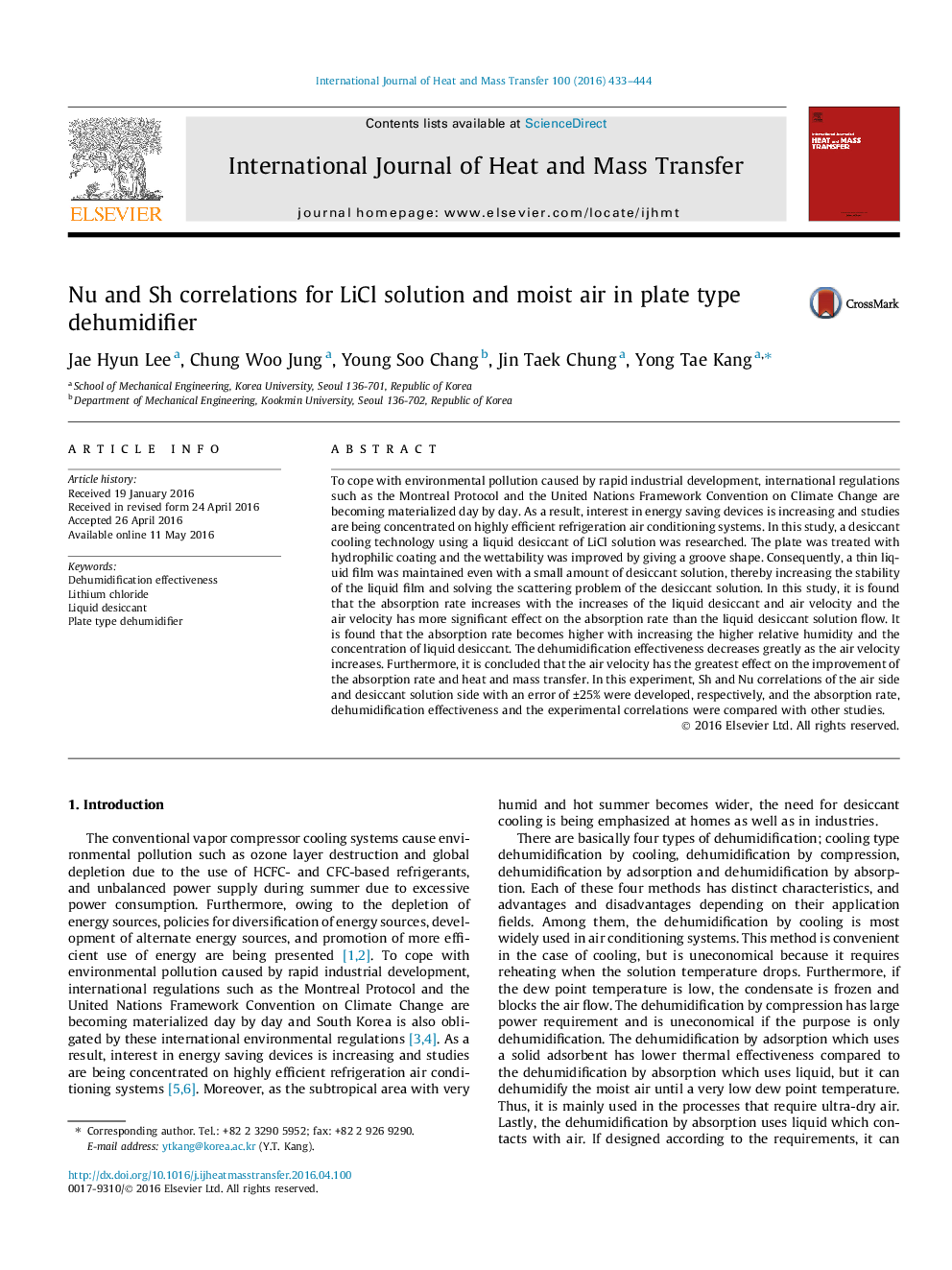| Article ID | Journal | Published Year | Pages | File Type |
|---|---|---|---|---|
| 656371 | International Journal of Heat and Mass Transfer | 2016 | 12 Pages |
•The combined heat and mass transfer characteristics of LiCl solution is analyzed for the plate type dehumidifier.•The higher the relative humidity and concentration of liquid desiccant, the greater the absorption rate becomes.•The air velocity is the most important factor for dehumidification performance enhancement.•Nu and Sh correlations are developed with the error bands of ±25%, respectively.
To cope with environmental pollution caused by rapid industrial development, international regulations such as the Montreal Protocol and the United Nations Framework Convention on Climate Change are becoming materialized day by day. As a result, interest in energy saving devices is increasing and studies are being concentrated on highly efficient refrigeration air conditioning systems. In this study, a desiccant cooling technology using a liquid desiccant of LiCl solution was researched. The plate was treated with hydrophilic coating and the wettability was improved by giving a groove shape. Consequently, a thin liquid film was maintained even with a small amount of desiccant solution, thereby increasing the stability of the liquid film and solving the scattering problem of the desiccant solution. In this study, it is found that the absorption rate increases with the increases of the liquid desiccant and air velocity and the air velocity has more significant effect on the absorption rate than the liquid desiccant solution flow. It is found that the absorption rate becomes higher with increasing the higher relative humidity and the concentration of liquid desiccant. The dehumidification effectiveness decreases greatly as the air velocity increases. Furthermore, it is concluded that the air velocity has the greatest effect on the improvement of the absorption rate and heat and mass transfer. In this experiment, Sh and Nu correlations of the air side and desiccant solution side with an error of ±25% were developed, respectively, and the absorption rate, dehumidification effectiveness and the experimental correlations were compared with other studies.
